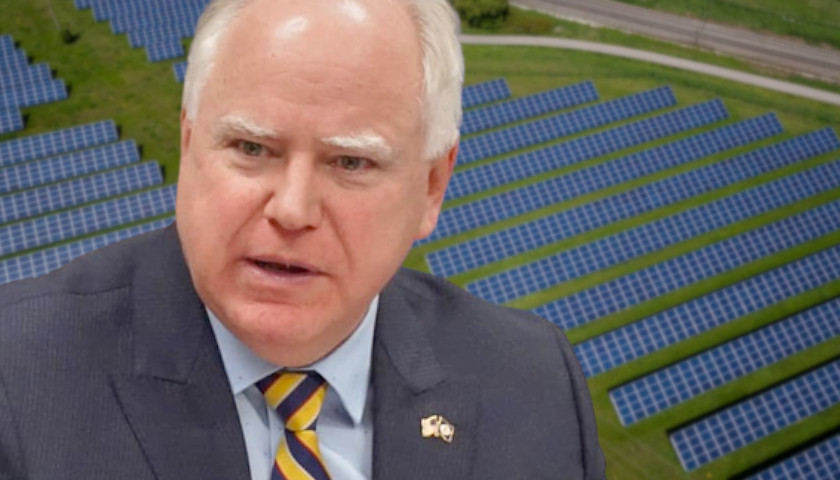by Anthony Gockowski
Gov. Tim Walz’s vision for a carbon-free Minnesota could have a devastating impact on family budgets, according to a new report released this week.
The report was authored by the Center of the American Experiment’s Isaac Orr, Mitch Rolling, and John Phelan, who used economic modeling software to predict the impacts of Gov. Walz’s proposal to create a 100% carbon-free electric grid by 2040.
“Gov. Walz’s proposal is essentially a wind, solar, and battery storage mandate, which is the same energy policy that is currently failing California as the state struggles to keep the lights on, and power bills continue to climb,” Orr explained.
According to the report, Minnesota law has prohibited the construction of new nuclear power plants since 1994. The Walz plan also fails to account for the “substantial quantities of carbon-free hydroelectricity” that Minnesota already buys from Canada, the report says. This leaves just wind, solar, and battery storage technologies.
“Gov. Walz had four years to legalize the construction of new nuclear power plants in our state, but he hasn’t done a single thing to lift this unscientific ban on the single-largest source of carbon-free power in Minnesota. Even California is recognizing the importance of keeping its nuclear fleet online, which is why the legislature voted to keep the Diablo Canyon nuclear plant open,” Orr said.
The report found electricity customers would pay an average of $3,888 extra per year, every single year, through 2050 under Walz’s proposal at a total cost of $313 billion to Minnesota families and businesses.
These higher costs would result in 79,000 lost jobs and slash the state’s annual GDP by $13.27 billion each year, according to the report.
The proposal would also expose Minnesota’s electric grid to possible blackouts.
“Mandating that 100 percent of Minnesota’s electricity come from carbon-free resources by 2040 without legalizing new nuclear power plants or large hydroelectric power would cost Minnesotans $313 billion — a cost of nearly $3,900 per family per year — and potentially cause a 55-hour blackout in January. This is an enormous price to pay in exchange for potentially averting 0.00096° C of warming by 2100,” the report explains.
The report points out that former Republican Gov. Tim Pawlenty’s 2007 Next Generation Energy Act has already caused prices to rise “dramatically” while making the electric grid less reliable.
An alternative plan, what the authors call a “Lower-Cost Decarbonization energy portfolio,” would involve the construction of new nuclear power plants, coal plants with carbon capture and sequestration equipment, battery storage, and Canada’s hydroelectric power facilities.
“These technologies offer superior value to wind and solar because they are dispatchable, meaning they can be turned up or down to provide electricity when needed. As a result, the LCD Scenario delivers 98 percent emissions-free electricity that is much more reliable and affordable than the Walz Proposal,” the report says.
However, under both proposals, the “costs of reducing emissions exceed the benefits.” Thus, the report concludes, “it is better to do nothing than implement either of these plans.”
Read the report here.
– – –
Anthony Gockowski is Editor-in-Chief of Alpha News. He previously worked as an editor for The Minnesota Sun and Campus Reform, and reported for The Daily Caller.
Photo “Tim Walz” by Tim Walz.




